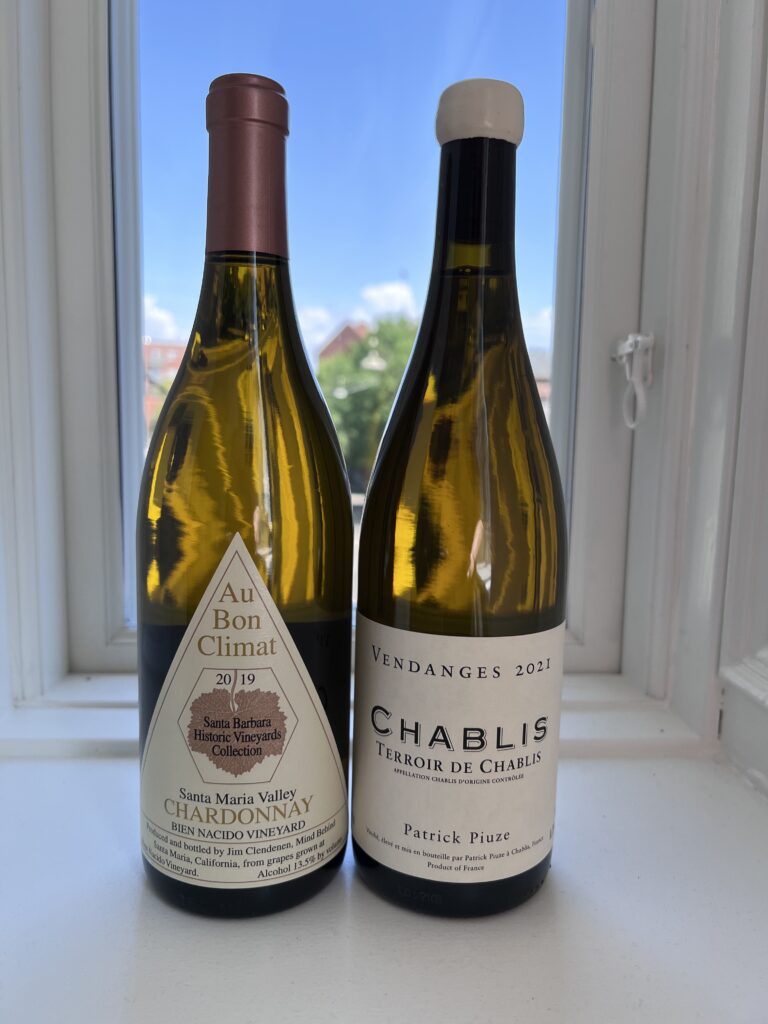To Oak or Not To Oak? That Is the Question With Chardonnay, an Incredibly Misunderstood Grape
The second most planted white wine grape globally is wildly popular among many, and responsible for arguably the greatest wines in the world.

To know them is to love them. The idea that if you take the time to really know a person, it’s almost impossible not to love them is also true of wine. Whether it’s the scientific processes in the vineyards or cellar, understanding the people who made it, the uniqueness of the place it was from, the culture and history that shaped its very existence, makes it nearly impossible not to fall in love with on a deeper level. Pulling back the layers of mystery, can make a bottle feel all that more magical.
It is that love and understanding that keeps me invested in this industry, meeting new people, traveling to far away vineyards, connecting over new discoveries or old flames. It is an experience I want to share with anyone who will have me and I’m going to assume if you’ve been reading this column for a while, that means you.
Knowing something, gaining mastery, especially in wine is a daunting task. Many people assume it’s based on the ability to memorize rote information. But the key to learning any subject is understanding its concepts, wine is no different.
I’m all for book learning, but wine is tactile, you’ve got to physically experience it. Maybe this is stating the obvious but the best way to learn about wine is to taste it. The key to understanding what you are tasting and incorporating it into concepts is to give it some context.
You can pick up some context from maps, books, websites, or by talking to the producer who made it. But nothing is so effective as comparing one wine against another, which shares a particular feature, in side-by-side format. Then tie what you can identify in the glass to what you can garner from outside of it.
With that in mind, I’m starting a monthly, participatory column, called “Know It and Love It.” Each month I will pick a concept and choose two wines that share that particular feature and which will (hopefully) illuminate said topic. The following month I’ll discuss my experience tasting the wines within the context of that theme.
Subjects could be focused on a grape, region, production method, vintage, quality level or some other binding feature of two wines. While tasting I encourage you to write your impressions. No fancy wine words needed, you can write anything from what you taste, the physical sensation of the wine, or anythough thoughts or feelings you have about it.
I will let you know which two wines I’m picking, if you’d like to taste along. But the good news is, you do not need to find the exact same wines — they just need to fit into the context of what we are discussing. I’ll give you the parameters of what to ask for from a local retailer or online and if they understand the concept and their inventory, you should be able to get what you need relatively easily.
Our first month’s concept: Chardonnay, to oak or not to oak.

This topic may seem somewhat pedestrian to some, or downright controversial to others. Chardonnay, went from America’s darling grape to a running joke (ABC – Anything But Chardonnay), but the reality is, this is an incredibly misunderstood variety, is still the second most planted white wine grape globally, wildly popular among many, and responsible for arguably the greatest wines in the world.
And as for oak, love it or hate it, I’m hoping you agree to give it a chance. There is a lot to unpack here, especially in its relationship to Chardonnay, but tasting some great examples and getting some further insight into its use will hopefully put it in a better light by the time we are done.
Wine 1: Patrick Piuze, Chablis Terroir de Chablis, 2021
What to ask for: Unoaked, stainless steel fermented and aged Chardonnay. You will often find these in Chablis and inexpensive Bourgogne Blanc. Many New World producers now make both oaked and unoaked versions of Chardonnay, like Channing Daughters in Long Island.
Wine 2: Au Bon Climat, Chardonnay Bien Nacido Vineyard, 2019
What to ask for: 100 percent barrel fermented and aged Chardonnay. These are to be found in all parts of the globe, but to demonstrate why you should be drinking them, I suggest going for something from a cooler climate, like Burgundy, or Santa Barbara, Far West Sonoma Coast, Anderson Valley in California, Willamette Valley in Oregon, Margaret River, Mornington Peninsula or Yarra in Australia, Patagonia in Argentina, Leyda Valley or Casablanca Valley in Chile, or New Zealand. Also, here is where you might consider jumping up in price to $35 and up. Oak is expensive and in oaked white wines, you get what you pay for.
Vintage shouldn’t really matter in this case, as you can see I have two different vintages. Just try to make them within 5 years of each other so the age doesn’t start to distract from the oak usage.
It may seem extravagant to open more than one bottle at a time, but think of this as the price of education, with a big pay off at the end. Also you can minimize waste by storing them properly after opening by sealing them back up and keeping them in the fridge. Use either with the cork or screw cap they came with, a rubber stopper, or even a piece of plastic and a rubber band will do.
In fact I insist that you don’t finish them both in one night (not because of how drunk you will be) but because wine changes once you open it and can show very differently from night to night. I like to keep two bottles open at most times and have a glass of each every night for four nights to monitor the evolution of a wine. The last night may not be in peak condition — sometimes it’s better — but it will be sure to teach you something about the value of aging.
Have fun wine hunting, tasting, and I encourage you to send me your feedback from your tasting. My email is in my byline.

